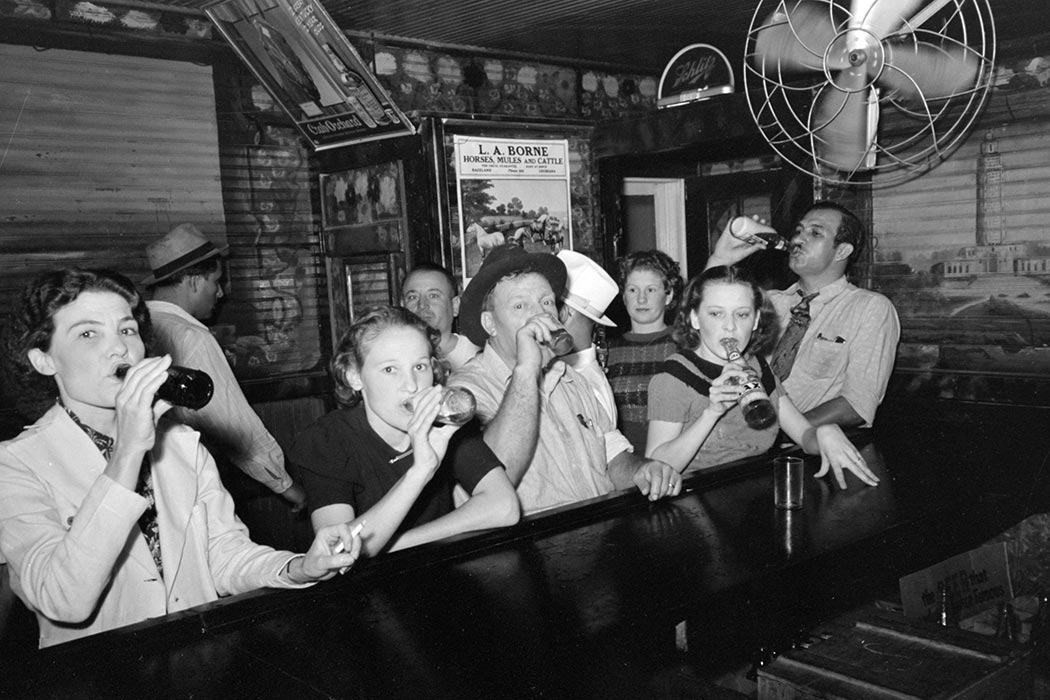When we think of Prohibition, the cultural touchstones of the Jazz Age come to mind: gangsters and molls, feather boas, glittering headpieces, and of course, bathtub gin. Sourced by shadowy bootleggers, noxious homemade moonshine killed or blinded hundreds of Americans. But that’s only half the story. What we once considered criminality run amok, was in fact inextricably tied to a willingness at the highest levels of American government to sacrifice the lives of those considered worthless degenerates.
Throughout the Prohibition period from 1920 to 1933, some forms of alcohol were still available for purchase. Prescription alcohol—to treat bronchitis and other conditions—was one. Industrial-grade alcohol—designed for use in paints and floor thinners—was another. Although it was undrinkable, industrial-grade alcohol was often stolen and resold by criminal syndicates to be used in cheap liquor. The Coolidge administration effectively encouraged the practice as a way of discouraging illegal consumption, by giving tax breaks to industrial-alcohol manufacturers who “denatured,” or poisoned, their supply.
The week of Christmas, 1926, almost a hundred people died from the effects of drinking industrial alcohol. Hundreds more died in subsequent years. They were drinking a substance that, thanks to government intervention, had been intentionally but unnecessarily rendered fatal.
For many in Coolidge’s administration, this was hardly a problem; in fact, in some cases it was seen as beneficial. It did, after all, get drunks off the streets expediently.
But for Charles Norris, New York’s medical examiner, it was just another example of the dark side of Prohibition’s would-be moral certainty. Writing for The North American Review in Christmas of 1928, Norris condemns America’s “essay in extermination” wrought by Prohibition.
“In a word,” Norris says, “wood alcohol is not ‘poison liquor’. It is simply poison. If it gets into liquor, the liquor is poisoned. So these Americans died not of poison liquor but of poisoned liquor. Who poisoned it?” He denies that it is “The Government.” Nevertheless, he sees the ubiquity of wood alcohol poisonings as “a serious indictment of Prohibition before the court of public opinion.” Addicts’ access to unsafe alcohol accelerates an existing danger: “Death by alcoholism means death by excess drinking of alcohol, encouraged and accelerated more or less by sundry poisons put into active service by our benevolent Government.”
Norris is something of a moderate when it comes to his views on Prohibition. He’s at once keen to stress that “these denaturants were originally added to the alcohol under Government control and connivance.” But (perhaps due to his governmental position) he is tactful in his assignation of blame. “But let us not blame the Government too harshly. Something must be added to grain alcohol to prevent its being all drunk away and thereby denied to legitimate industry and business.” Rather, Norris blames the system itself: a moral philosophy of prohibition that drives the drunk and the desperate toward noxious materials the government is perfectly willing to let them consume.
Weekly Newsletter
Norris reveals how New York of the 1920’s viewed certain populations as disposable. By entering the sphere of immorality, alcoholics, in the eyes of the Coolidge administration, forfeited their right to life. It’s telling that, even in death, there are two rules: one related to “respectable drunks” and one for the degenerates. As Norris writes, “Private physicians will rarely make such a report and expose their deceased customers to the indignity of a post-mortem examination, [but] will prefer to ascribe death to other “natural causes” when they can, in the case of clients in good standing or society.”
Norris’s essay reminds us that moral outrage over perceived danger—and a concern for the reality of human life—don’t necessarily go hand in hand. Especially when those lives lost are not “in good standing” in the society in which they live.







